Selecting Power Supplies for Industrial Applications
What must be considered when selecting an industrial power supply?
What’s fascinating about industrial systems is the continuous, rhythmic execution of their task, working in harmony to assemble products, prepare food, build vehicles, and handle materials. Ensuring these systems remain operational 24 hours a day, seven days a week is no simple task. And, behind every PLC, actuator, and sensor, a power supply is needed to ensure energy is continuously available. So, how do you select a power supply that will operate reliably under the challenging conditions industrial systems face?
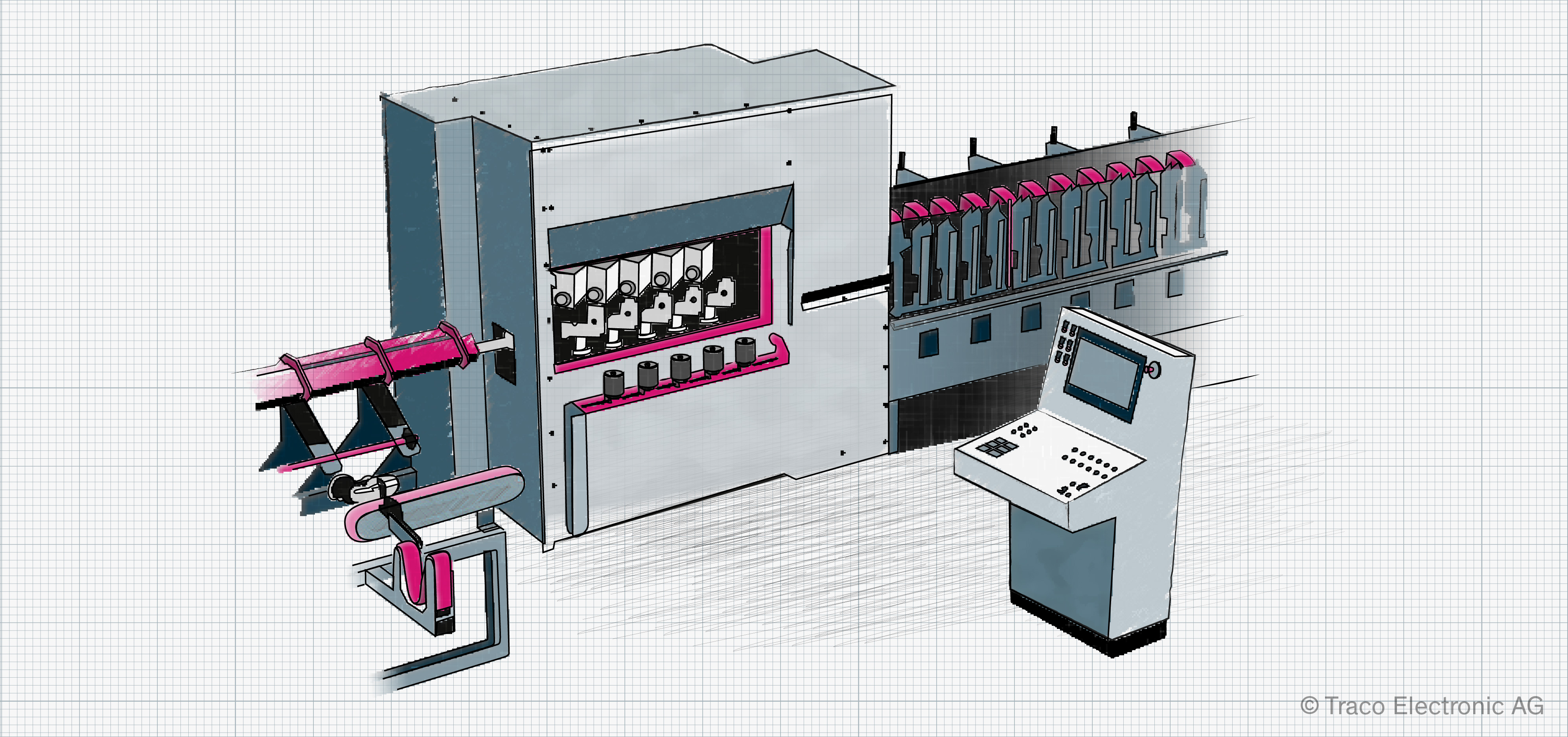
How do I specify the input voltage required?
The starting point in determining the optimal power supply revolves around three technical parameters: input voltage, output voltage, and output power. If you’re constructing a machine that is permanently installed on your own site, this is defined by the supply the machine is connected to, for example, single-phase 230 VAC at 50 Hz.
However, if you’re building equipment for export around the world, you’ll need to consider all the different mains supplies your customers may have available. In such cases, you can specify a universal AC input. This ranges from 85 VAC to 264 VAC, supporting around 47 to 60 Hz. While alternating current is typical in industrial systems, there may be cases where only a direct current (DC) supply is available. Some power supplies additionally support a DC input supply similar in range to the AC input, allowing you to cover such eventualities.
What must be considered regarding the PSU output?
With the input voltage options clarified, it’s time to look at the output requirements. These are determined by the equipment being powered, such as industrial sensors, PLCs, and actuators such as servo drives. For example, although most PLCs define a supply voltage of 24 VDC, they can typically withstand a variation, including ripple, of around ±20 percent.
Some power supplies offer two or three different output voltages, typically targeting common voltages or both positive and negative outputs. Should the desired voltage be unavailable, operating two supplies in series to achieve the desired output is possible. Two supplies of the same model and output specification should be used.
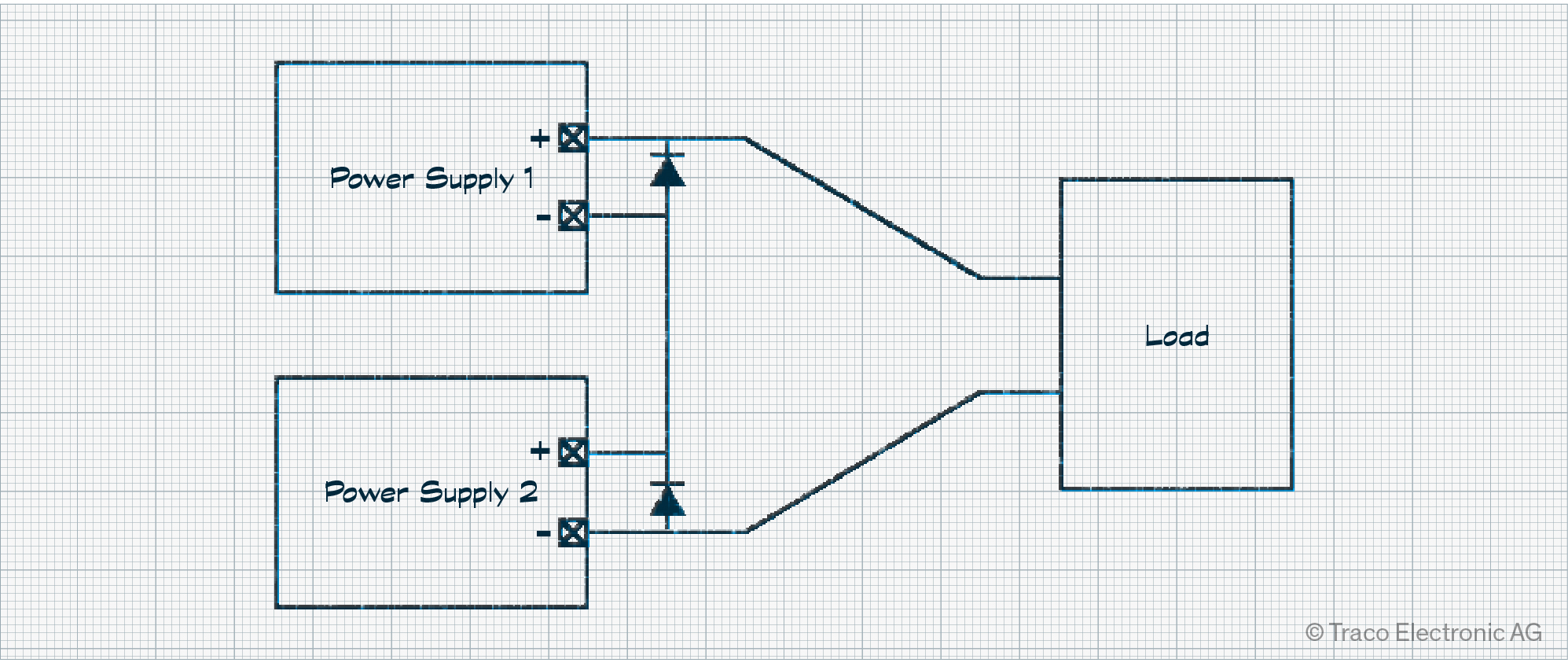
Most loads define a typical and maximum current draw, such as 80 mA and 100 mA. When powering multiple loads, the sum of the maximum currents should be calculated for worst-case conditions. Leveraging the equation for power, P = I × V, you’ll be able to define the required power output. For example, if you planned to power five of the described PLCs, you’re looking at between 400 mA and 500 mA, or a power requirement between 9.6 W and 12 W at 24 VDC.
If you can’t source a power supply delivering the needed output, two or more could be operated in parallel to provide the sum of the available power. However, you should limit yourself to drawing 80% of the total available power. Factors such as temperature and aging can also cause premature aging of one supply, leading to one stressed unit and possible failure. Choose supplies of the same model operating at the same voltage or select units designed to operate in parallel. If in doubt, it is worth contacting the manufacturer for their advice.
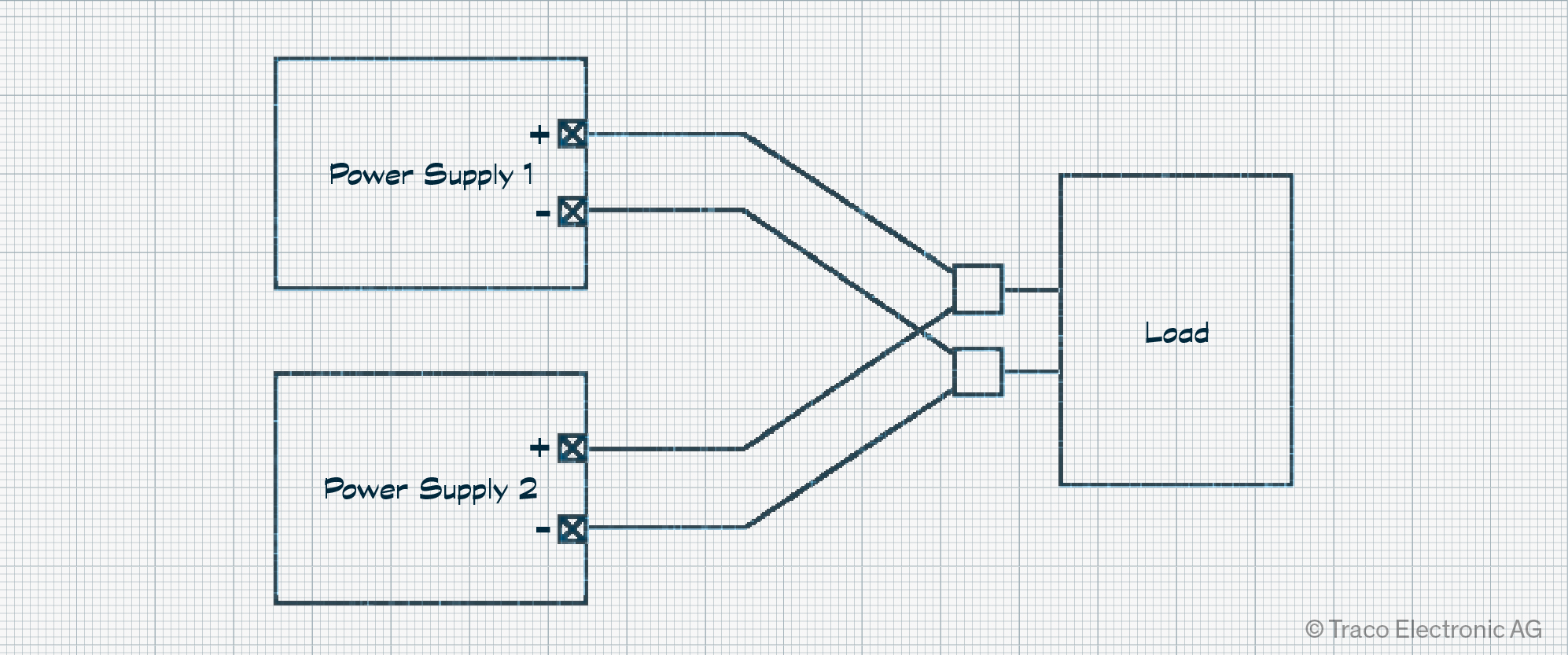
Choosing power supply mounting, cooling, and termination options
In some situations, the application defines the mounting and cooling requirements for your power supply. For example, DIN rails or Hutschienen are a standard mounting option for PLCs and related equipment, so a DIN rail power supply is your best option.
Units delivering up to 600 W that rely on convection cooling are available, so there is no need to worry about a cooling fan. In fact, industrial-grade PSUs avoid forced cooling as it forms another potential point of failure. You will, however, need to ensure adequate airflow for natural convection, with 20 LFM (linear feet per minute) a typical specification.
Other power supplies come in a metal case complete with chassis mounts, enabling installation in your application using screw fixings. Finally, if you’re building an industrial application at component level, you’ll want to look at printed-circuit board (PCB) mounted power supplies. These may be open frame with no casing at all, or be encased in a plastic enclosure with a potting compound.
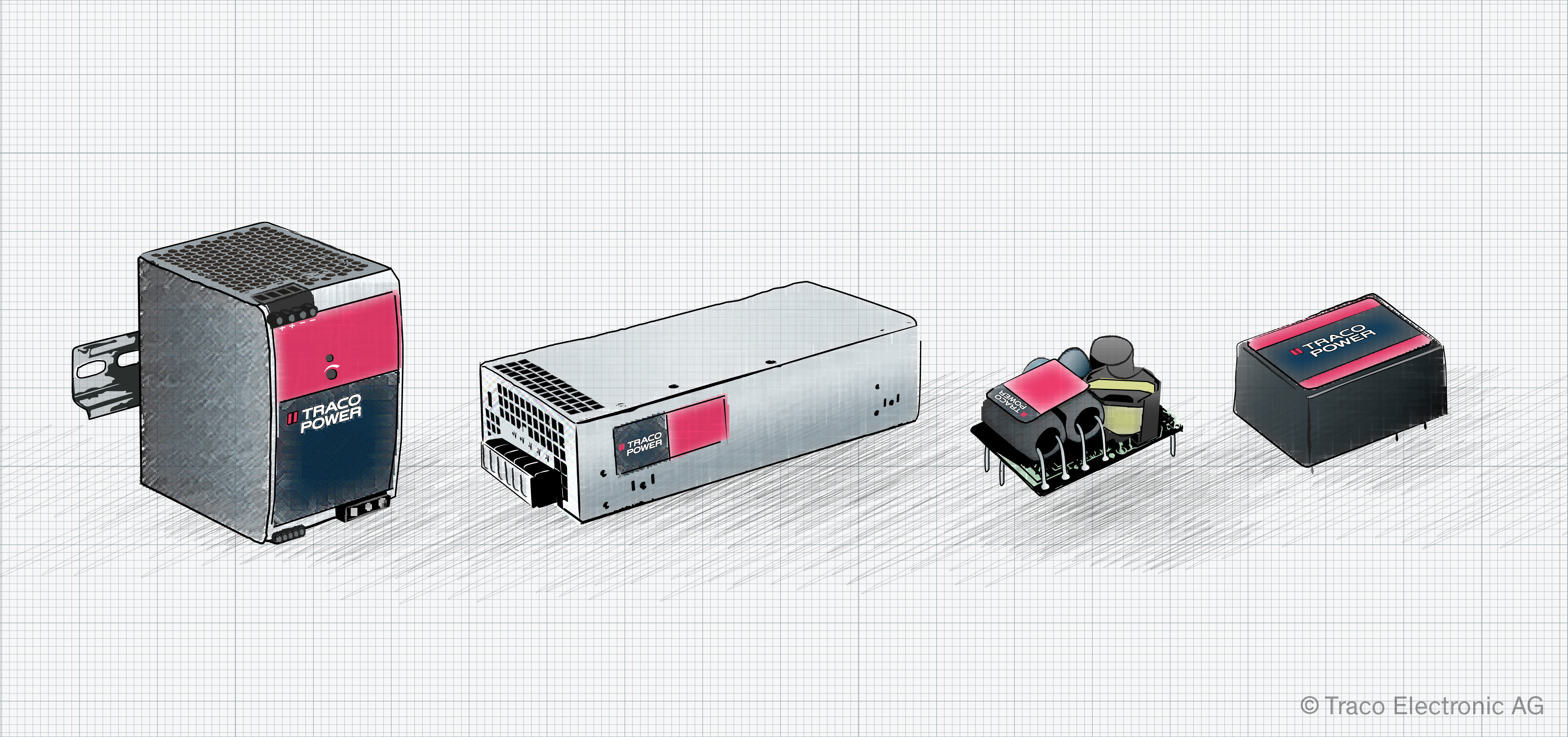
The type of mounting and target application often leads to specific termination options. DIN rail and chassis mount PSUs typically offer screw terminals, allowing technicians to wire the unit in easily. Adapters are also available to attach chassis mount supplies to DIN rails. For PCB mount units, you’ll need to refer to the datasheet drawings for the pin spacing and dimensions. Regardless of the type you select, most suppliers also provide CAD drawings that can be imported into your design software, helping to avoid any placement issues when building your equipment.
Ensuring the PSU fulfills your environmental conditions and industry standards
If your system is subject to regular vibration or physical shocks, you’ll want to check what standards have been fulfilled. These environmental factors are covered by standards such as EN 61373 and parts of IEC 60068-2. You’ll also want to check the operating temperature range and the non-condensing relative humidity specified. Power derating at higher temperatures and lower input voltages may also be defined.
UL 508 is another important standard for industrial control equipment. The standard ensures fulfillment of overload, dielectric withstand, short circuit, and standard fault current tests, plus a range of other essential criteria. Complying with such standards ensures that the PSU meets industrial applications’ safety, reliability, and longevity demands.
If you need to go deeper into the details, you’ll typically find application notes providing information on thermal considerations, EMC test results, adjustment of the output voltage, and characteristic curves.
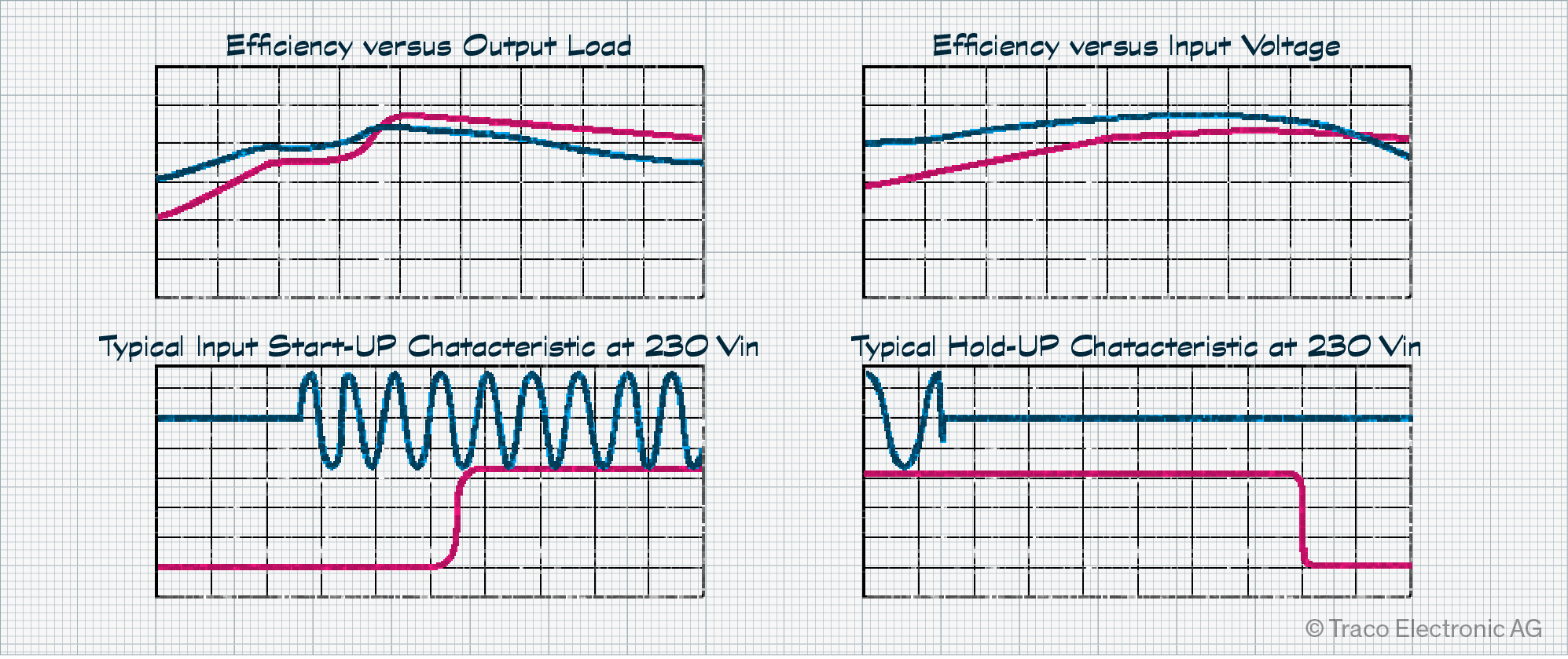
How to specify an industrial power supply matched to your needs
Finally, while manufacturers cover most everyday industrial power supply needs, there will always be cases where precisely what you need is unavailable. In such cases, there are two options. Sometimes, adapting an existing design or undertaking an extra certification to meet your needs is possible. Otherwise, a custom design could be considered. In such cases, you’ll need to gather all your requirements and share them with your chosen partner to start on the design process.